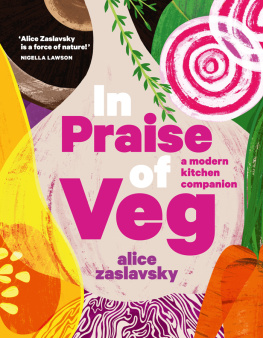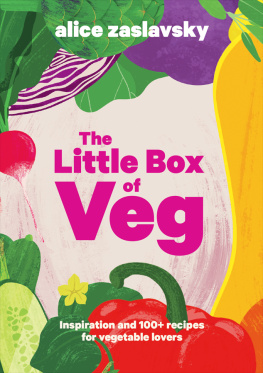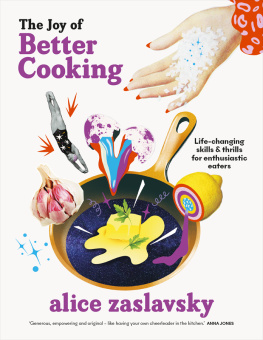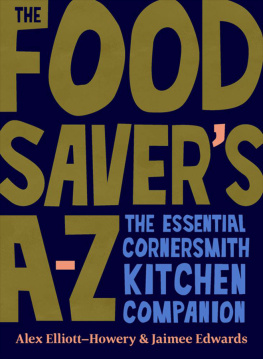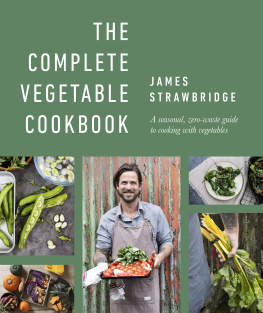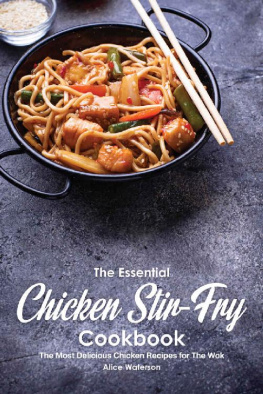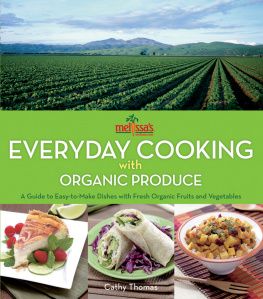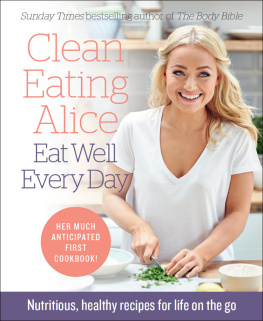In this fully illustrated kitchen companion, food writer and presenter Alice Zaslavsky profiles 50 favourite vegetable varieties, offering 150+ recipes reflective of both tradition and modernity, just as all good cooking should be. Uniquely organised by colour and filled with countless tips on flavour combinations, rule-of-thumb buying/storing/cooking methods, shortcuts, and veg wisdom from over 50 of the worlds top chefs, In Praise of Veg will help beginners and avid cooks alike turn a bag of yawns or a produce-box surprise into a knock-out meal.
For the vegetarian or just veg-forward, In Praise of Veg is the most ambitious and comprehensive reference on the topic, as well as the delicious answer to the age-old question: what are we eating?
W e l l , h e l l o t h e r e . . .
You might have flipped here from the fancy front cover, or cavorted back through a kaleidoscope of colour-coded recipe pages to land at this one, with its big bold greeting. Lets hang out!
This hefty tome is my tribute to the wonderful world of veg. Ive chosen 50 of my all-time favourites and delved a little deeper into what makes them special for cooks and eaters alike, offering ways to bring the best out of them in the kitchen, no matter what your skill level. Once you leaf (ha!) through these pages, youll be able to pick up a root, a tuber, a bulb, a stalk, and have ideas and inspiration bubble forth, so that youre never short of a meal or a menu. Youll be able to use the other books you already have, with a better understanding of why a recipe does what it does, and what you can do to adapt or play with it.
This is not a purely plant-based book, because that is not reflective of how my family my husband Nick and our daughter Hazel (a.k.a. The Nut) and I eat. We are, however, plant-forward, in that we start with the veg and build the dishes around them. I wanted to write a book with that principle at its heart, because I believe many of us have a desire to flex our flexitarian muscle to grab more greens, reduce the load we put on the environment, and take more care with the proteins we choose. But often, we just dont know where to start, and arent at the point of going cold tofu quite yet. Thats why these recipes are all vegetable-driven, first and foremost, and if theres some flaked fish or a bit of bacon, its there as a secondary element because it makes the dish with substitutions for anyone whos up for the full veg.
Growing up in Georgia in the former Soviet Union, my diet was vegetable-heavy by both culture and necessity a Caucasus cuisine with an abundance of fresh produce, bartered behind the Iron Curtain. On emigrating, my appreciation for cuisine became informed and enriched by the melting pot of Australia; a place where splashing soy sauce onto spaghetti bolognese seems like a perfectly sensible thing to do. The recipes in this book are reflective of both tradition and modernity, like all good cooking should be.
Bucking further from tradition, this book is not alphabetical or seasonal rather, it is tonal. Vegetables are grouped by colour, with comprehensive entries for more commonly found forms, crib notes for produce-box surprises, and recipes for the more unusual varieties smattered throughout for when youre feeling adventurous, or youve been handed a home-grown heirloom something-or-other. I want you to be able to flick through and find what youre looking for, through the squinty eyes of someone whos spent too long staring into the fridge, trying to figure out what to do with the dregs at the bottom of the crisper. And, better yet, to open your mind to the fabulous forms and flavours that are right at your fingertips.
Loving your leftovers
There has never been a better time for accessing, storing, using and reusing fresh food as there is today. Its no surprise that the more readily available fresh produce has become, the less love we give to the stuff left over yet somehow, I missed that memo. Im a leftovers-lover from way back! And vegetables are easier to reincarnate than any other food group, thanks to their long shelf life and chameleonic capabilities. When I was young, Mums Big Batch Borsch was the after-school snack of dreams for this latch-key kid. And once I figured out that I could put bonus stuff in the borsch, like croutons and luncheon meat, the culinary world was cracked wide open to me forever more. These days, I purposely make more of stuff than I need, because the only thing better than a home-cooked dinner is knowing that youve still got a perfectly packed portion to reinvigorate for lunch the next day.
One of the biggest secrets you may not realise about restaurant food is that much of it could easily be classified as reinvigorated leftovers. Unless its something cooked la minute , most of the works been done well before you place your order hours, if not days, in advance. Thats why prices can seem so steep: its not just the cost of ingredients that youre paying for, but the prep hours too. If youve got a choice between eating last nights spag bol or ordering takeaway, consider the fact that either way, youre eating leftovers.
At what point do leftovers simply become meal prep? Well, thats entirely up to you. Im an unapologetically lazy cook, so I consciously load up my fridge with extra stuff to help speed up the journey from hangry to happy. Hard cheese rinds, frozen stock (cooked down to fit into an ice-cube tray, to pop out a cube or two as needed), frozen peas and corn ready for tossing into a pot when dishes need bonus bits, and half an onion in the door (why is there always half an onion in every fridge?) are but some of the delights that you will always find in my arsenal. Extra serves of roasted/steamed/boiled/fermented/pickled vegetables are the gifts that keep on giving, ready to become soup, salad, sauce or a dip at the blitz of a button or the flick of a fork.

